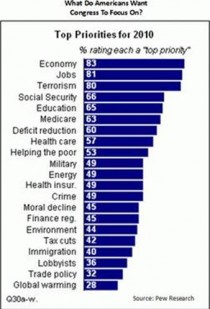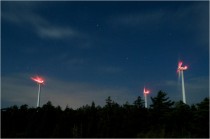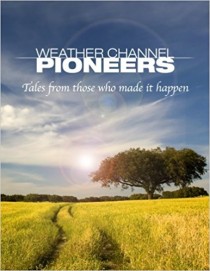
Enlarged here.
By Wyatt Buchanan, Chronicle Sacramento Bureau
California grossly miscalculated pollution levels in a scientific analysis used to toughen the state’s clean air standards, and scientists have spent the past several months revising data and planning a significant weakening of the landmark regulation, The Chronicle has found.
The pollution estimate in question was too high - by 340 percent, according to the California Air Resources Board, the state agency charged with researching and adopting air quality standards. The estimate was a key part in the creation of a regulation adopted by the Air Resources Board in 2007, a rule that forces businesses to cut diesel emissions by replacing or making costly upgrades to heavy-duty, diesel-fueled off-road vehicles used in construction and other industries.
The staff of the powerful and widely respected Air Resources Board said the overestimate is largely due to the board calculating emissions before the economy slumped, which halted the use of many of the 150,000 diesel-exhaust spewing vehicles in California. Independent researchers, however, found huge overestimates in the Air Board’s work on diesel emissions and attributed the flawed work to a faulty method of calculation - not the economic downturn.
The overestimate, which comes after another bad calculation by the Air Board on diesel-related deaths that made headlines in 2009, prompted the board to suspend the regulation earlier this year while officials decided whether to weaken the rule.
On Thursday, after months of work, the Air Board and construction industry officials announced a proposal that includes delaying the start of the requirements until 2014 and exempting more vehicles from the rule. It would be a major scaling back of the rule if the Air Board approves it in a vote scheduled for December. The announcement was made as The Chronicle was preparing to publish this report, which had been in the works for several weeks.
The setbacks in the Air Board’s research - and the proposed softening of a landmark regulation - raise questions about the performance of the agency as it is in the midst of implementing the Global Warming Solutions Act of 2006 - or AB32 as it is commonly called, one of the state’s and nation’s most ambitious environmental policies to date.
AB32, which aims to reduce carbon emissions to 1990 levels by the year 2020, has come under intense political attack this year as the state prepares to elect a new governor. Critics cast the law as a jobs killer because of the expenses to industry and businesses in conforming to new pollution regulations. Supporters say it will reinvigorate the state’s economy and create thousands of new jobs in the emerging green sector.
Republican gubernatorial candidate Meg Whitman has promised to suspend the law for at least a year, while Democrat Jerry Brown supports the law. California voters, meanwhile, will vote on Prop. 23, a November initiative to suspend AB32 until the unemployment rate - now at 12.4 percent in California - falls to 5.5 percent or less for a year.
No answers
Mary Nichols, chairwoman of the California Air Resources Board, offered no explanation when The Chronicle questioned her about the diesel emissions miscalculation. She was recently asked why the air board estimate of a nitrous oxide source was off by at least two-fold - Air Board scientists have since revised their numbers and data shows it was off by 340 percent. Nichols’ response: “I can’t answer that for you.”
Nichols was emphatic, though, when asked whether she has concerns about other scientific calculations made by Air Board scientists.
“No, no, no, no, no, no, no and no,” she said.
Members of Nichols’ board don’t have an answer for the overestimate either, said Ron Roberts, an Air Board member who is a Republican supervisor in San Diego County and who voted in favor of the dieselregulation.
“One of the hardest things about being on the board is separating fact from political fancy,” Roberts said.
Roberts has been on the board for 15 years and said the agency has built a solid scientific reputation, but he said the board can’t afford another mistake and he still does not know what really happened.
“I think somehow some very poor decisions have been made and politics have entered the picture too much,” he said. “There are plenty of excuses but no explanations.”
Cutting diesel emissions
The regulation - called the “In-Use Off-Road Diesel Vehicle Regulation” - was adopted by the board in July 2007 to cut the amount of emissions released by diesel vehicles, with some exceptions, that aren’t operated on regular roads and highways. Most of the affected vehicles are used in construction, mining and airport ground support and include such machinery as bulldozers, dump trucks, forklifts and cranes.
The construction industry had said the rule would cost construction businesses $10 billion to $12 billion in equipment purchases or upgrades required to make the machines run cleaner.
The regulation restricts the emission of two pollutants - nitrous oxide and particulate matter - to meet federal clean air standards and to benefit public health.Most standards created by the board have been praised as ground-breaking in the fight against pollution, but recent errors have also made the board a target for criticism.
One of the major recent problems was an Air Board estimate of premature deaths caused by particulate matter spewing from diesel engines. The first calculation found 18,000 deaths a year in the state had links to particulate matter. That has been revised down by nearly half.
The revision was ordered after the board scientist who oversaw that study was outed as having faked his scientific credentials.
Roberts and other board members were not told by Nichols that the scientist, Hien Tran, lied about earning a Ph.D. from UC Davis before they voted in favor of regulations based in part on his science. That vote took place in December 2008.
Nichols, who acknowledges she knew about the falsification prior to the vote, has apologized for not sharing that information with her fellow board members.
Roberts called the spate of errors “a major black eye” for the board. He said he does not know why the process to fix them is taking longer than first expected.
Changing data
Top researchers at the Air Board said they are dealing with complex issues and that their jobs have been made harder because the economic downturn has shut down some of the pollution-emitting machines that were in use in industries like construction and trucking. Todd Sax, chief of the board’s mobile source analysis branch, said scientists are trying to keep up with changes in the economy to have the best pollution estimates and to ensure the state meets federal air quality obligations.
“We’ve been trying to get the numbers right and the recession continues to take hold,” Sax said, adding that his branch is “constantly re-evaluating” its numbers. Their latest estimate for sources of nitrous oxide found that off-road vehicles are burning 228 million gallons of diesel fuel per year. The previous estimate was 1 billion gallons, which means that first estimate was 340 percent higher than the new calculation. Sax said roughly half of that is due to the recession but the other half is due to a revised method of calculation that focuses more directly on the number of gallons of fuel sold instead of estimates about equipment use.
Another analysis
The problem, and the revised counting method, came to light after Robert Harley, a UC Berkeley professor of environmental engineering, and a colleague at Lawrence Berkeley National Laboratory did their own evaluation, which was published last December in the journal Atmospheric Environment. While Air Board officials and other defenders of the Air Board science point to the economy as a major factor in the overestimates, Harley found that prior to the recession the board’s estimates of nitrous oxide were too high by a factor of 4.5 and its estimate of particulate matter was off by a factor of 3.1, an extraordinarily high amount to be off scientifically.
“The difference is large enough that it changes policy,” Harley said.
Harley said he has not found major discrepancies in other industrial sectors - such as trucking - where the air board has estimated pollution emissions.
Meanwhile, the estimate of premature deaths linked to diesel engine particulate matter has been downsized to 9,200 from the previous study of 18,000. Bart Croes, chief of research for the Air Board, noted that the board used an entirely new model developed by the federal Environmental Protection Agency that more directly links pollution with mortality and that the levels of uncertainty are much smaller under the new estimate.
The Air Resources Board acknowledges that the new estimates mean that emitters of the pollution would need to make significantly smaller - and in turn less expensive - changes to their vehicles.
Orchestrated delay?
Construction industry leaders, whose businesses have been a major target for reducing pollution, said they have long been skeptical of the board’s estimates. They have eagerly awaited proposals for regulation changes and some even believe the Air Board was intentionally slowing down the changes to lay low while the debate over AB32 rages in the public forum.
“I think they’re waiting till after November because they are really hoping the election goes one way that’s more favorable than another and they would have a freer hand to do what they want to do,” said Michael Lewis, president of the Construction Industry Air Quality Coalition, which monitors regulations affecting the industry.
The coalition supports Prop. 23, but has not made major donations to the campaign, Lewis said, citing the severe impact of the recession. “There’s not a lot of money to spread around on ballot measures,” he said.
Air board staff is considering changing rules for other regulations, too, including for on-road trucks, though there has been no formal agreement like the one made today.
Julie Sauls, spokeswoman for the California Trucking Association, said the delay has led to immense confusion in the industry for what regulations they ultimately will have to comply with and when. The initial rules affecting trucks begin this year and the more expensive regulations take effect and ramp up over the next several years.
She said she could only speculate on the delay, but said “I think maybe they’re just waiting” to see what happens on election day. The association has endorsed Prop. 23.
AB32 delays
While the air board has spent the past few months revising its diesel data, something else has happened: It has pushed back the timeline on one of the most controversial parts of AB32 - the cap-and-trade program for carbon emissions.
The cap-and-trade regulation was expected to be put before the public for review this spring, but now board officials say it will be sometime this fall and will be voted on before the end of the year.
Nichols, the air board chairwoman, rejects notions that the air board is avoiding the spotlight, calling the changes in timeline the nature of science and adding that, “In politics people can fudge; in science you can’t. The great benefit of science is it is peer reviewed.”
Dan Kalb, California Policy Manager for the Union of Concerned Scientists, which strongly supports cap-and-trade, said he is not aware of an orchestrated slowdown of work, but said the board is sensitive to the attention it is receiving.
“The Air Resources Board is trying to be as careful and thorough as they can. Everyone knows they’re in the spotlight, the national spotlight,” Kalb said. He said it did not matter to him if it takes longer than planned, “Just as long as they get it done.”
No matter what happens, Nichols said her board will complete its work on AB32 by the mandated end-of-year deadline. “We are on schedule; there has been no delay,” she said. Nichols said every new regulation involves times of uncertainty and requires time itself to come to the best rule.
“It’s science and it’s analysis and it takes however long it takes,” Nichols said.
About the California Air Resources Board
The Legislature created the California Air Resources Board in 1967 to oversee the state’s air quality by conducting research into sources of pollution and ways to remove it from the air, and by setting and enforcing emissions standards. It has an 11-member board and a large staff. The air board sets the pollution limits used in vehicle smog checks, consumer products like spray paint and even sets standards for idling trucks and buses. It has created some of the strictest clean air rules in the country.
Read post here.
By Tom Zeller Jr., New York Times
VINALHAVEN, Me. - Like nearly all of the residents on this island in Penobscot Bay, Art Lindgren and his wife, Cheryl, celebrated the arrival of three giant wind turbines late last year. That was before they were turned on.

Matt McInnis for The New York Times
Residents living less than a mile from the $15 million wind facility in Vinalhaven, Me., say the industrial whoosh-and-whoop of the 123-foot blades is making life unbearable.
“In the first 10 minutes, our jaws dropped to the ground,” Mr. Lindgren said. “Nobody in the area could believe it. They were so loud.”
Now, the Lindgrens, along with a dozen or so neighbors living less than a mile from the $15 million wind facility here, say the industrial whoosh-and-whoop of the 123-foot blades is making life in this otherwise tranquil corner of the island unbearable.
They are among a small but growing number of families and homeowners across the country who say they have learned the hard way that wind power - a clean alternative to electricity from fossil fuels - is not without emissions of its own.
Lawsuits and complaints about turbine noise, vibrations and subsequent lost property value have cropped up in Illinois, Texas, Pennsylvania, Wisconsin and Massachusetts, among other states. In one case in DeKalb County, Ill., at least 38 families have sued to have 100 turbines removed from a wind farm there. A judge rejected a motion to dismiss the case in June. Like the Lindgrens, many of the people complaining the loudest are reluctant converts to the antiwind movement.
“The quality of life that we came here for was quiet,” Mrs. Lindgren said. “You don’t live in a place where you have to take an hour-and-15-minute ferry ride to live next to an industrial park. And that’s where we are right now.”
The wind industry has long been dogged by a vocal minority bearing all manner of complaints about turbines, from routine claims that they ruin the look of pastoral landscapes to more elaborate allegations that they have direct physiological impacts like rapid heart beat, nausea and blurred vision caused by the ultra-low-frequency sound and vibrations from the machines.
For the most extreme claims, there is little independent backing. Last year, the American Wind Energy Association, a trade group, along with its Canadian counterpart, assembled a panel of doctors and acoustical professionals to examine the potential health impacts of wind turbine noise. In a paper published in December, the panel concluded that “there is no evidence that the audible or sub-audible sounds emitted by wind turbines have any direct adverse physiological effects.”
A separate study financed by the Energy Department concluded late last year that, in aggregate, property values were unaffected by nearby wind turbines.
Numerous studies also suggest that not everyone will be bothered by turbine noise, and that much depends on the context into which the noise is introduced. A previously quiet setting like Vinalhaven is more likely to produce irritated neighbors than, say, a mixed-use suburban setting where ambient noise is already the norm.
Of the 250 new wind farms that have come online in the United States over the last two years, about dozen or so have generated significant noise complaints, according to Jim Cummings, the founder of the Acoustic Ecology Institute, an online clearinghouse for information on sound-related environmental issues.
In the Vinalhaven case, an audio consultant hired by the Maine Department of Environmental Protection determined last month that the 4.5-megawatt facility was, at least on one evening in mid-July when Mr. Lindgren collected sound data, in excess of the state’s nighttime sound limits. The developer of the project, Fox Island Wind, has contested that finding, and negotiations with state regulators are continuing.
In the moonlit woods behind a neighbor’s property on a recent evening, Mr. Lindgren, a retired software engineer, clenched a small flashlight between his teeth and wrestled with a tangle of cables and audio recording equipment he uses to collect sound samples for filing complaints.
At times, the rustle of leaves was all that could be heard. But when the surface wind settled, a throbbing, vaguely jetlike sound cut through the nighttime air. “Right there,” Mr. Lindgren declared. “That would probably be out of compliance.”
Maine, along with many other states, puts a general limit on nighttime noise at 45 decibels - roughly equivalent to the sound of a humming refrigerator. A normal conversation is in the range of 50 to 60 decibels.
In almost all cases, it is not mechanical noise arising from the central gear box or nacelle of a turbine that residents react to, but rather the sound of the blades, which in modern turbines are mammoth appendages well over 100 feet long, as they slice through the air.
Turbine noise can be controlled by reducing the rotational speed of the blades. But the turbines on Vinalhaven already operate that way after 7 p.m., and George Baker, the chief executive of Fox Island Wind - a for-profit arm of the island’s electricity co-operative - said that turning the turbines down came at an economic cost.
“The more we do that, the higher goes the price of electricity on the island,” he said.
A common refrain among homeowners grappling with sound issues, however, is that they were not accurately informed about the noise ahead of time. “They told us we wouldn’t hear it, or that it would be masked by the sound of the wind blowing through the trees,” said Sally Wylie, a former schoolteacher down the road from the Lindgrens. “I feel duped.”
Similar conflicts are arising in Canada, Britain and other countries. An appeals court in Rennes, France, recently ordered an eight-turbine wind farm to shut down between 10 p.m. and 7 a.m. so residents could get some sleep.
Richard R. James, an acoustic expert hired by residents of Vinalhaven to help them quantify the noise problem, said there was a simpler solution: do not put the turbines so close to where people live.
“It would seem to be time for the wind utility developers to rethink their plans for duplicating these errors and to focus on locating wind turbines in areas where there is a large buffer zone of about a mile and one-quarter between the turbines and people’s homes,” said Mr. James, the principal consultant with E-Coustic Solutions, based in Michigan.
Vinalhaven’s wind farm enjoys support among most residents, from ardent supporters of all clean energy to those who simply say the turbines have reduced their power bills. Deckhands running the ferry sport turbine pins on their hats, and bumper stickers seen on the island declare “Spin, Baby, Spin.”
“The majority of us like them,” said Jeannie Conway, who works at the island’s ferry office. But that is cold comfort for Mrs. Lindgren and her neighbors, who say their corner of the island will never be the same.
“I remember the sound of silence so palpable, so merciless in its depths, that you could almost feel your heart stop in sympathy,” she said. “Now we are prisoners of sonic effluence. I grieve for the past.”
See post here.
Add to that the birdkill and the much lower than promised energy efficiency resulting in much higher electric bills, one has to ask whether this is really the future of energy?


